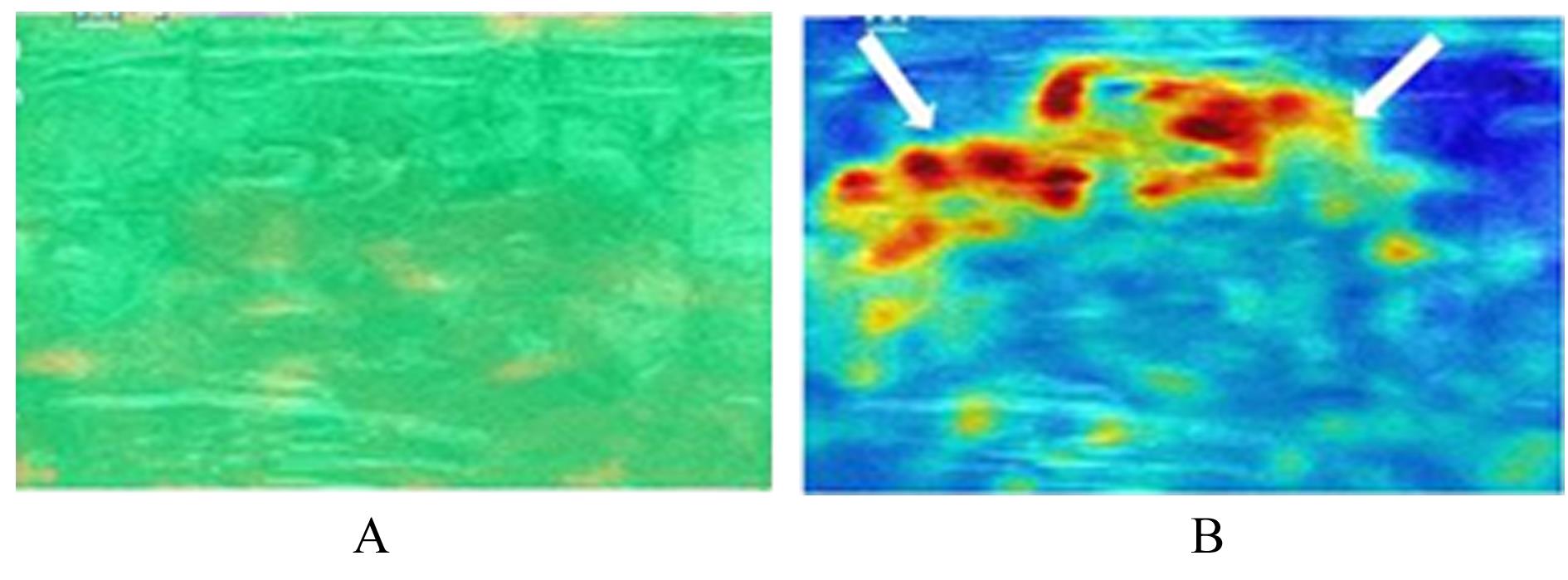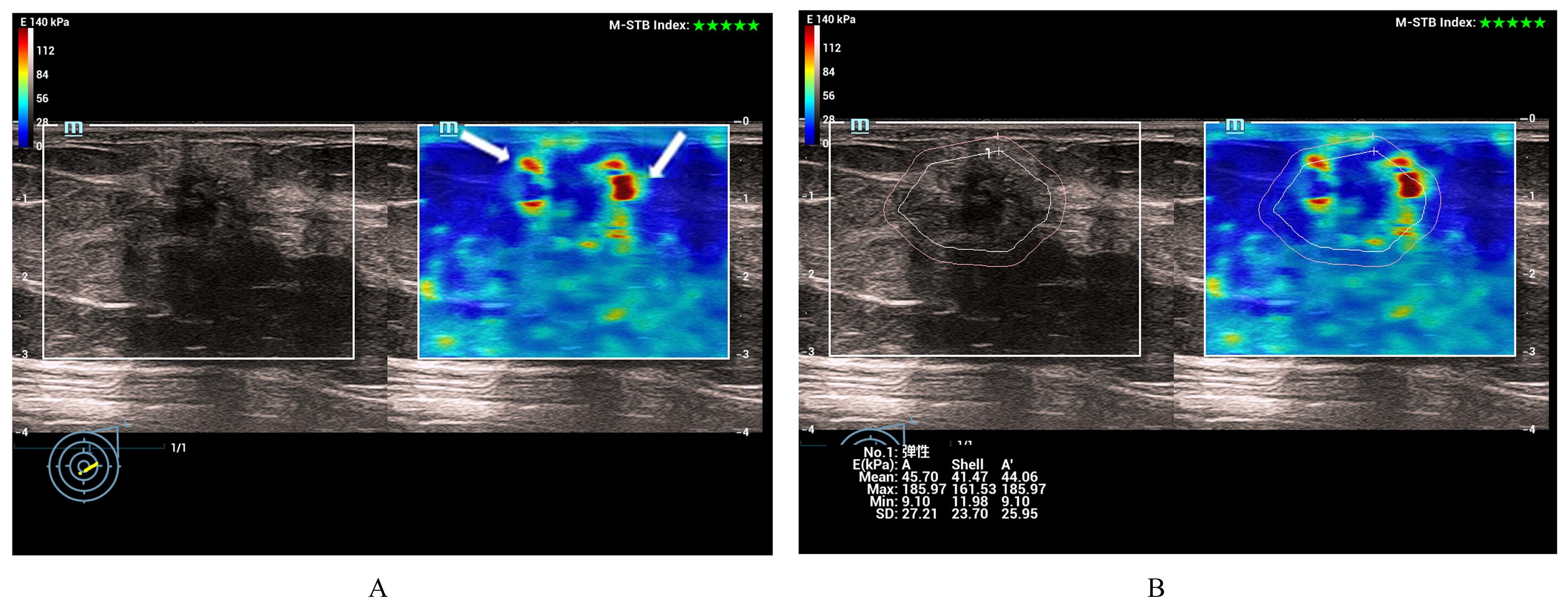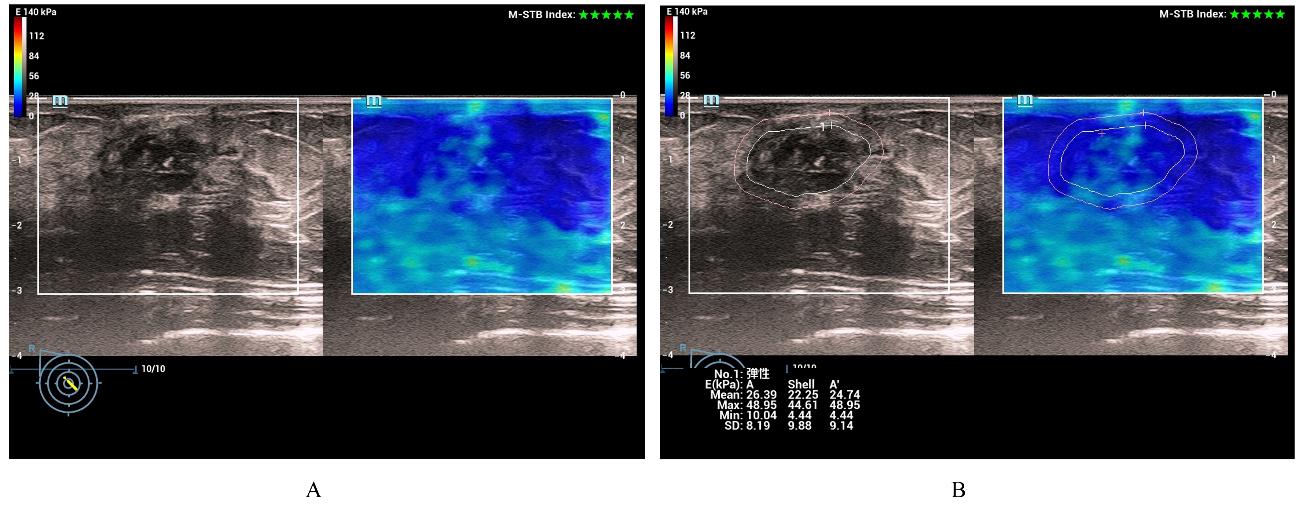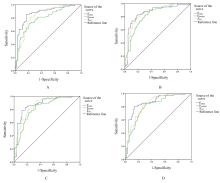| 1 |
SIEGEL R L, MILLER K D, FUCHS H E, et al. Cancer statistics,2022[J]. CA Cancer J Clin, 2022. 72( 1): 7- 33.
|
| 2 |
FILLON M. Breast cancer recurrence risk can remain for 10 to 32 years[J]. CA Cancer J Clin, 2022, 72( 3): 197- 199.
|
| 3 |
MERCADO C L. BI-RADS update[J]. Radiol Clin North Am, 2014, 52( 3): 481- 487.
|
| 4 |
CHOE J, CHIKARMANE S A, GIESS C S. Nonmass findings at breast US: definition, classifications, and differential diagnosis[J]. Radiographics, 2020, 40( 2): 326- 335.
|
| 5 |
CHOI J S, HAN B K, KO E Y, et al. Additional diagnostic value of shear-wave elastography and color Doppler US for evaluation of breast non-mass lesions detected at B-mode US[J]. Eur Radiol, 2016, 26( 10): 3542- 3549.
|
| 6 |
LI L J, ZHOU X C, ZHAO X B, et al. B-mode ultrasound combined with color Doppler and strain elastography in the diagnosis of non-mass breast lesions: a prospective study[J]. Ultrasound Med Biol, 2017, 43( 11): 2582- 2590.
|
| 7 |
PESCE K, BINDER F, CHICO M J, et al. Diagnostic performance of shear wave elastography in discriminating malignant and benign breast lesions: our experience with QelaXtoTM software[J]. J Ultrasound, 2020, 23( 4): 575- 583.
|
| 8 |
CANTISANI V, DAVID E, BARR R, et al. US-elastography for breast lesion characterization: prospective comparison of US BIRADS, strain elastography and shear wave elastography[J]. Ultraschall Der Med Eur J Ultrasound, 2020, 42: 533- 540.
|
| 9 |
EVANS A, WHELEHAN P, THOMSON K, et al. Quantitative shear wave ultrasound elastography: initial experience in solid breast masses[J]. Breast Cancer Res, 2010, 12( 6): R104.
|
| 10 |
KO K H, JUNG H K, KIM S J, et al. Potential role of shear-wave ultrasound elastography for the differential diagnosis of breast non-mass lesions: preliminary report[J]. Eur Radiol, 2014, 24( 2): 305- 311.
|
| 11 |
WANG Z L, LI Y, WAN W B, et al. Shear-wave elastography: could it be helpful for the diagnosis of non-mass-like breast lesions?[J]. Ultrasound Med Biol, 2017, 43( 1): 83- 90.
|
| 12 |
KO K H, HSU H H, YU J C, et al. Non-mass-like breast lesions at ultrasonography: feature analysis and BI-RADS assessment[J]. Eur J Radiol, 2015, 84( 1): 77- 85.
|
| 13 |
QU X X, SONG Y, ZHANG Y H, et al. Value of ultrasonic elastography and conventional ultrasonography in the differential diagnosis of non-mass-like breast lesions[J]. Ultrasound Med Biol, 2019, 45( 6): 1358- 1366.
|
| 14 |
BARTELS A K, FADARE O, HASTEH F, et al. Nonmass enhancement lesions of the breast on core needle biopsy: outcomes, frequency of malignancy, and pathologic findings[J]. Hum Pathol, 2021, 111: 92- 97.
|
| 15 |
WANG Z L, LI N, LI M, et al. Non-mass-like lesions on breast ultrasound: classification and correlation with histology[J]. Radiol Med, 2015, 120( 10): 905- 910.
|
| 16 |
GUO R R, LU G L, QIN B J, et al. Ultrasound imaging technologies for breast cancer detection and management: a review[J]. Ultrasound Med Biol, 2018, 44( 1): 37- 70.
|
| 17 |
YANG H, XU Y Y, ZHAO Y N, et al. The role of tissue elasticity in the differential diagnosis of benign and malignant breast lesions using shear wave elastography[J]. BMC Cancer, 2020, 20( 1): 930.
|
| 18 |
HUANG L D, MA M K, DU Z, et al. Quantitative evaluation of tissue stiffness around lesion by sound touch elastography in the diagnosis of benign and malignant breast lesions[J]. PLoS One, 2019, 14( 7): e0219943.
|
| 19 |
REN W W, LI X L, HE Y P, et al. Two-dimensional shear wave elastography of breast lesions: comparison of two different systems[J]. Clin Hemorheol Microcirc, 2017, 66( 1): 37- 46.
|
| 20 |
ZHOU J Q, ZHAN W W, CHANG C, et al. Breast lesions: evaluation with shear wave elastography, with special emphasis on the stiff rim sign[J]. Radiology, 2014, 272( 1): 63- 72.
|
| 21 |
CHAMMING'S F, LATORRE-OSSA H, LE FRÈRE-BELDA M A, et al. Shear wave elastography of tumour growth in a human breast cancer model with pathological correlation[J]. Eur Radiol, 2013, 23( 8): 2079- 2086.
|
| 22 |
XU Y J, GONG H L, HU B, et al. Role of “Stiff Rim” sign obtained by shear wave elastography in diagnosis and guiding therapy of breast cancer[J]. Int J Med Sci, 2021, 18( 15): 3615- 3623.
|
| 23 |
PARK S Y, CHOI J S, HAN B K, et al. Shear wave elastography in the diagnosis of breast non-mass lesions: factors associated with false negative and false positive results[J]. Eur Radiol, 2017, 27( 9): 3788- 3798.
|
| 24 |
CHOI S H, KO E Y, HAN B K, et al. Effect of calcifications on shear-wave elastography in evaluating breast lesions[J]. Ultrasound Med Biol, 2021, 47( 1): 95- 103.
|
 ),Zhiyao LI,Dong CHEN,Huijing NI,Xiaokai LU,Haitao CHEN(
),Zhiyao LI,Dong CHEN,Huijing NI,Xiaokai LU,Haitao CHEN( ),Xiaomao LUO
),Xiaomao LUO











